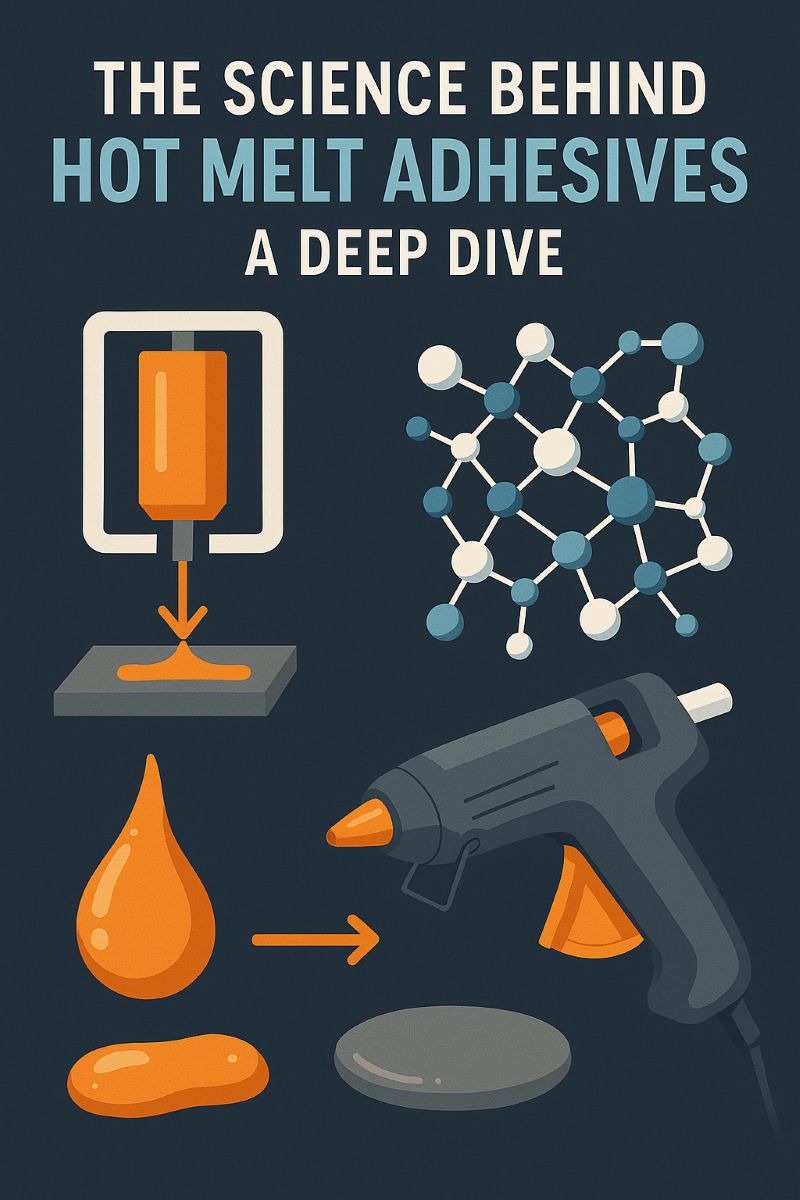
Definition of Hot Melt Adhesives
Types of Adhesive Compositions
Importance in Industrial Applications
Methods of Adhesive Application
Latest Trends in Adhesive Technology
Strategies for Optimal Use
Future Directions and Innovations
Frequently Asked Questions (FAQ)
Hot melt adhesives are solid thermoplastic materials that liquefy when heated and return to a solid state upon cooling, forming durable and fast-setting bonds. Their ability to bond instantly without solvents makes them ideal for industries such as packaging, furniture, automotive, and textiles. Known for high efficiency, low waste, and clean application, these adhesives have become a cornerstone in automated manufacturing environments seeking speed and consistency.
The composition of a hot melt adhesive greatly influences its bonding performance and end-use application. Common types include:
Ethylene-Vinyl Acetate (EVA): Offers balanced performance and affordability, widely used in packaging and general assembly.
Polyolefin-Based Adhesives: Known for their superior bonding strength on low-surface-energy substrates, such as plastics and coated papers.
Polyurethane (PUR) Hot Melts: Provide high flexibility, chemical resistance, and durability, making them suitable for automotive and electronic applications.
Selecting the right composition ensures compatibility with substrates and processing conditions, enhancing both performance and longevity.
Hot melt adhesives are indispensable across industries due to their:
Fast curing time: Accelerates production by reducing clamping and drying stages.
Strong and flexible bonding: Supports dynamic loads and various material types.
Clean application: Reduces mess and minimizes the need for solvents or drying time.
From assembly lines to high-speed packaging, hot melt adhesives increase throughput, reduce operational costs, and contribute to streamlined processes.
Hot melt adhesives can be applied using different techniques based on the product and production setup:
Extrusion: Dispenses adhesive in a precise, controlled stream; ideal for automated lines.
Spray: Offers wide, even coverage on irregular or large surfaces.
Roll Coating: Applies consistent adhesive layers, perfect for lamination and flat-surface bonding.
Each method has specific advantages in terms of accuracy, speed, and material compatibility. Choosing the right application method ensures optimal bond performance.
The adhesive industry is evolving rapidly in response to environmental, performance, and digital demands:
Bio-Based Formulations: Derived from renewable sources, these adhesives reduce reliance on petroleum-based inputs.
Enhanced Heat and Moisture Resistance: New formulations meet the stringent requirements of sectors like automotive and electronics.
Smart Manufacturing Compatibility: Adhesive systems are now being developed to integrate with Industry 4.0 for real-time monitoring and precision control.
These innovations enable manufacturers to meet rising sustainability standards while enhancing product reliability.
To achieve the best results with hot melt adhesives:
Match adhesive type to application needs: EVA for economy and general use; PUR for flexibility and toughness.
Choose the correct application method: Based on material, bond line control, and production speed.
Maintain equipment regularly: Prevents clogs, uneven dispensing, and char build-up that can reduce adhesive performance.
Monitor application parameters: Temperature, pressure, and speed should be optimized for consistency and strength.
Proper strategy leads to better productivity, fewer rejects, and longer-lasting bonds.
Emerging advancements in hot melt adhesive technology include:
Smart Adhesives: Incorporating sensors to track bonding integrity and environmental exposure in real time, enabling predictive maintenance.
Eco-Conscious Development: A focus on biodegradable or compostable adhesive options that maintain strong performance.
Material Versatility: Formulations that bond effectively with recycled plastics and difficult substrates, expanding their use in sustainable packaging.
These innovations are driving the industry toward a future of smarter, cleaner, and more efficient adhesive use.
Q1. What are hot melt adhesives?
They are solid adhesives that melt upon heating and solidify quickly upon cooling, forming strong bonds without the need for solvents.
Q2. What types of adhesive compositions are available?
Common types include EVA, polyolefin, and polyurethane-based hot melts, each with distinct characteristics suited for various applications.
Q3. Why are hot melt adhesives important in industrial applications?
They improve production efficiency, reduce drying time, and provide strong, flexible bonds suitable for a wide range of materials.
Q4. What methods are used to apply hot melt adhesives?
Typical methods include extrusion, spray, and roll coating—each chosen based on material type, surface area, and application precision.
Q5. What are the latest trends in adhesive technology?
Key trends include bio-based formulations, enhanced bonding performance in extreme conditions, and compatibility with automated manufacturing.
Q6. How can one optimize the use of hot melt adhesives?
Match the adhesive type and application method to the use case, and maintain equipment regularly to ensure consistent performance.
Q7. What is the future direction for hot melt adhesives?
Future developments include smart adhesive technologies with real-time monitoring, and the growth of sustainable adhesive alternatives.
Q8. Are there reliable sources for hot melt adhesives?
Many global and regional manufacturers produce high-quality hot melt adhesives. Selection should focus on technical fit, certification, and supply reliability based on your industry.